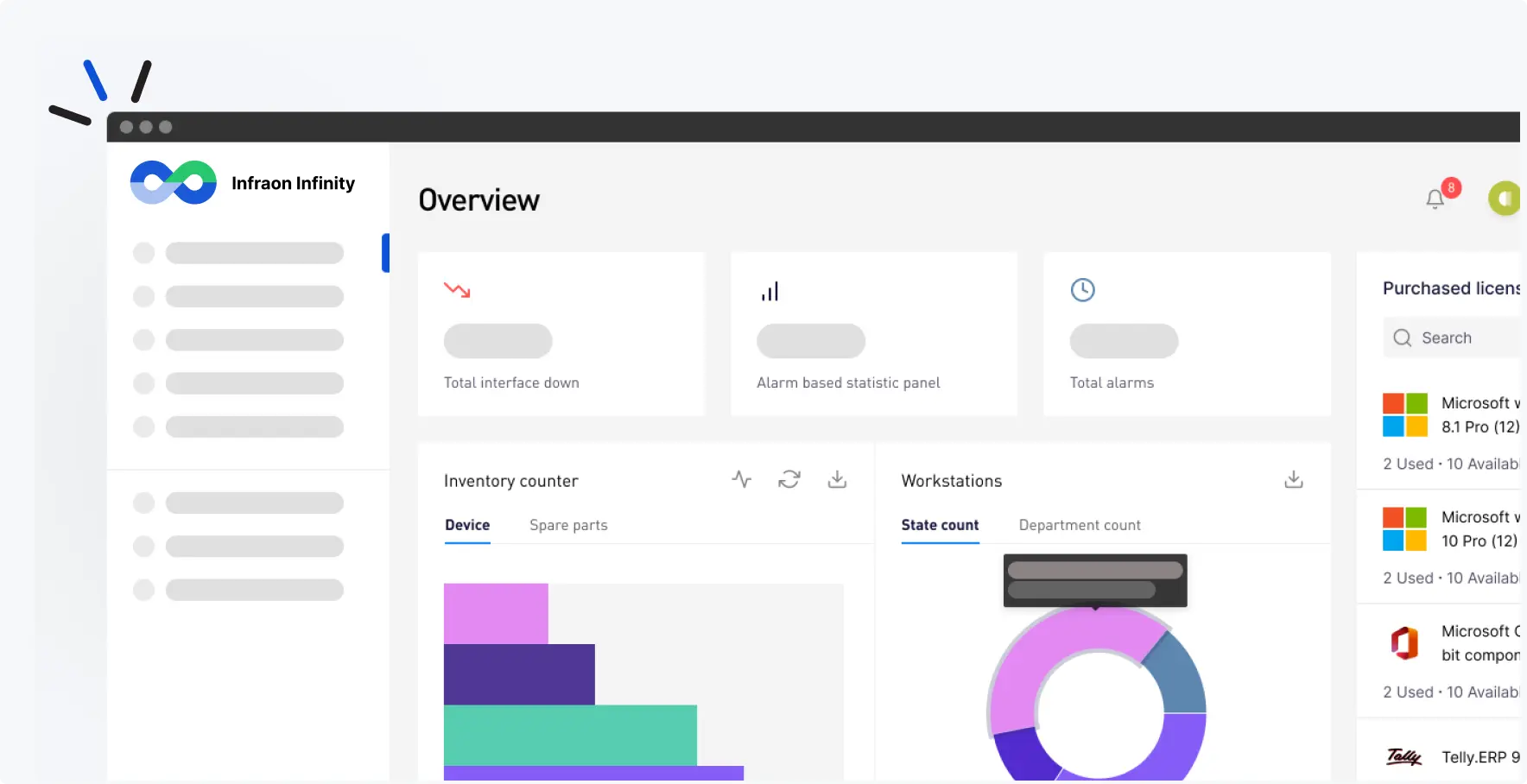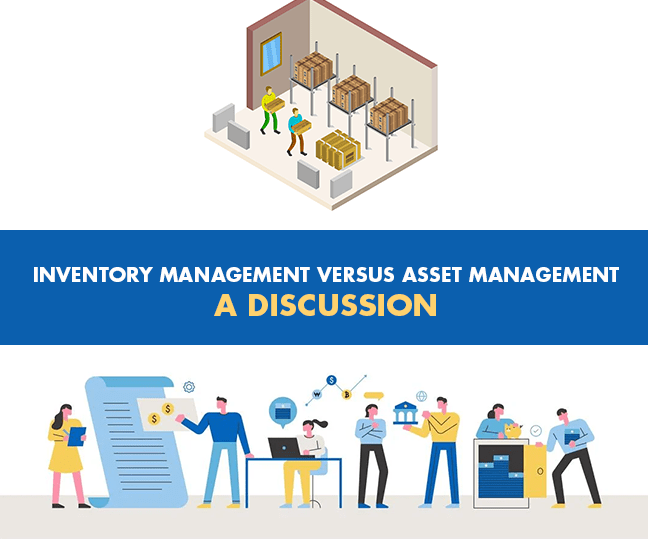Why should you consider IT asset tagging in business? Have you ever considered how it can improve visibility, making it easy to keep track of assets while reducing the risk of loss or theft? Did you know it can help you manage an organization’s inventory systematically, providing valuable data for planning, budgeting, and optimizing resources? In this blog, you’ll explore the world of IT asset tagging and discover how it can enhance business operations.
Do you know that asset tagging and asset tracking software provide robust data tracking possibilities? The global market for asset tagging technology is projected to reach a staggering $36.3 billion by 2025, highlighting its increasing significance for businesses worldwide.
Asset tagging is an essential practice in contemporary business operations. It implies the allocation of distinctive identifiers, such as labels or barcodes, to IT assets like computers and servers. This strategic approach amplifies asset visibility, streamlines inventory management, encourages data security, and simplifies asset lifecycle management, boosting operational functions and regulatory compliance. Through IT asset tags, organizations can monitor asset location and condition, optimize resource allocation, and safeguard sensitive data, all while realizing prudent cost savings and prolonging the service life of hardware assets.
Related blog: Best practices for effective asset tagging in 2023
What is IT Asset Tagging?

Asset tagging, often called asset labeling, is attaching or associating unique identifiers, such as labels, barcodes, QR codes, RFID tags, or serial numbers, to individual physical assets within an organization. These physical assets can encompass a wide range of items but are not limited to IT equipment, machinery, vehicles, furniture, office equipment, etc.
IT asset tagging is a systematic practice employed by organizations involving unique identifiers like labels or barcodes for individual IT assets, enhancing visibility, accountability, and precise tracking. This practice significantly reduces the risk of asset loss or theft, ensuring efficient asset management and safeguarding valuable technology resources. In essence, IT asset tagging streamlines asset management, reducing risks and enhancing operations.
The primary purpose of asset tagging is to enhance the management, tracking, and control of these assets throughout their lifecycle. Each asset tag is a distinctive marker or code that links a specific asset to a digital or physical record containing information about that asset. This information typically includes the asset’s purchase date, location, maintenance history, depreciation value, and other relevant data.
Tagging Assets: Exploring the Different Types of Tags and Labels
Asset tags and labels come in various types, each designed to address specific requirements and operating conditions. The following are the common types of tags and labels.
Barcode Tags: Barcode tags are a staple in asset management. It has unique patterns that can be quickly scanned with a barcode reader. These tags are cost-effective for organizations needing straightforward asset tracking. Barcodes streamline the asset identification process and are widely used in retail, logistics, and manufacturing.

QR Code Tags: QR code asset tags have gained popularity due to their versatility. These tags employ Quick Response codes to store asset information by scanning QR codes through smartphones, making asset identification and tracking easy. These codes are often used for equipment maintenance, product tracking, etc.

RFID Tags: RFID tags use radio waves to transmit asset data to RFID readers. They offer real-time tracking capabilities and are invaluable for organizations that need to track large quantities of assets, especially in challenging environments. RFID tags are used in warehouses, logistics, and healthcare for tracking valuable equipment and inventory.
Durable Metal Tags: In outdoor environments, durable metal tags made of materials like stainless steel or aluminum are the preferred choice. These tags are designed to withstand corrosion, extreme temperatures, and physical wear and tear. They are used in the construction, utilities, and aerospace industries for easy asset identification.
Tamper-Evident Labels: Tamper-evident labels are crucial for safeguarding assets. It is designed to reveal signs of tampering or removal attempts. When someone tries to peel or tamper with the label, it leaves a visible mark or void message. These labels are ideal for assets that require additional security measures, such as pharmaceuticals, sensitive documents, or high-value equipment.
When choosing the correct label for your organization, consider factors like the asset tracking needs, the operating environment, budget constraints, and the level of security required. Selecting the appropriate label type ensures that organized asset management contributes to the overall performance of your tracking system.
Key Considerations When Choosing the Right Asset Management Tag for an Organization
Selecting the appropriate asset management tag is a crucial decision that can significantly impact an organization’s asset management, security, and overall operations. To make an informed choice, it’s essential to consider the following key factors:
Asset Type and Environment: Evaluate the asset’s nature and location. Choose tags suitable for the asset’s environment, whether indoors, outdoors, or exposed to harsh conditions.
Durability: Determine the expected lifespan of assets and select tags that match their durability requirements to ensure longevity and reliability.
Scanning Technology: Consider the scanning technology used in an organization. Choose tags compatible with the organization’s existing systems, whether barcodes or RFID tags.
Data Storage Needs: Assess the amount of data that needs to be stored on the tag. Choose tags with sufficient data storage capacity, such as QR codes or intelligent tags, to meet your requirements.
Integration: Ensure seamless integration with asset management software or systems. Compatibility is essential for well-organized asset tracking and data management.
By carefully evaluating these considerations, decision-makers can decide when to choose tags that align with an organization’s goals, ensuring proficient asset management and enhanced security.
Unlocking the Significance of Asset Tags: Why They Matter?

Asset tags are pivotal in asset management for organizations across various sectors. Their importance lies in their transparency and competence in identifying individual assets, capturing essential data, and streamlining asset tracking. Without asset tags, the manual documentation of an asset’s location and history can be prone to errors and time-consuming.
These tags also establish a culture of accountability by assigning ownership and responsibility for each asset, which encourages proper handling and discourages unauthorized use. Furthermore, asset tags are multifunctional in asset management. They deter theft and enhance asset security, making it easier to trace stolen items. It ensures compliance with standards during audits in regulated industries and provides vital data about asset lifespan and maintenance costs, aiding budgeting.
A well-tagged asset inventory boosts operational performance by minimizing search times and ensuring asset availability. Tags simplify audits, reducing errors and non-compliance risks. They generate essential data for informed decisions about asset maintenance and replacements. Asset tags are important tools that enhance asset visibility and accountability and encourage compliance and informed decision-making.
Cultivating Security and Accountability: The Advantages of Asset Tagging
Asset tags are essential in asset management, offering various benefits. Organizations can significantly enhance their operations and security by attaching unique identifiers to individual assets. Here are the benefits of asset tags.
Transparency
Asset tagging introduces remarkable transparency into an organization’s asset inventory. With each asset equipped with a unique identifier, instant recognition and traceability are assured, ensuring that assets are tracked and managed, thereby streamlining daily operations.
Establishes Accountability
Asset tagging surpasses mere labeling and is pivotal in accountability. It eliminates ambiguity when identifying each asset’s custodian or responsible party. Cultivating a culture of responsibility within the organization is a clear deterrent against mishandling or unauthorized use.
Streamlined Tracking and Monitoring
Asset tagging functions as a central component for the streamlined tracking and monitoring of assets. It allows organizations to remain Synchronized to asset movements, utilization patterns, and maintenance schedules. Through the facilitation of proactive maintenance, it reduces the occurrence of unexpected breakdowns and optimizes asset utilization, thus minimizing downtime.
Preventing Theft and Unauthorized Usage
Asset tags are displayed prominently as a robust visual deterrent against theft and unauthorized use of assets. This added security significantly lowers the risk of asset theft and ensures that, in case of theft, assets can be easily traced and subsequently recovered.
Ensuring Regulatory Compliance
Asset tagging is essential for compliance in industries subject to rigorous regulations and standards. It provides organizations with a structured method to follow industry-specific requirements while streamlining the auditing process through systematic record-keeping.
Optimizing Costs
Asset tagging equips organizations with vital insights into asset lifespans, depreciation rates, and maintenance expenses. With this valuable data, they can make well-informed decisions about budget allocation for asset replacements, upgrades, or maintenance, ultimately optimizing their financial resources.
Streamlined Auditing
Asset tagging simplifies the asset verification and reporting process during audits, minimizing the possibility of errors and inaccuracies. This expedites audit procedures and diminishes the potential for non-compliance penalties.
In conclusion, asset tagging is a crucial practice in asset management. It enhances security and helps organizations make informed decisions about their valuable resources in manufacturing, healthcare, logistics, or any other industry. Asset tagging is pivotal in safeguarding assets, optimizing operations, and ensuring long-term success.
Achieving Operational Excellence through Asset Tags
Asset tagging is essential for organizations to gain control and accountability over their valuable resources. Explore critical steps in asset tagging, from assigning unique identifiers to selecting the correct tags, recording essential data, and conducting audits. Mastering the process optimizes asset management, streamlines operations, and safeguards investments.
Asset Identification: This crucial first step involves assigning a unique identification number or code to each asset within the organization. This identifier distinguishes one asset from another and is the asset’s primary reference point in the tagging system. It ensures that each asset can be individually tracked and identified throughout its lifecycle.

Tag Selection: The appropriate asset tag or label type is essential for effective asset tracking. Consider factors such as the asset’s characteristics and operating environment. Common choices include barcodes, QR codes, RFID tags, or labels with serial numbers. The choice of tag technology should align with the organization’s tracking capabilities and budget.
Data Recording: Creating a comprehensive asset profile for each item is critical for accurate tracking and management. This profile includes essential information such as the asset’s purchase date, acquisition cost, current location, assigned user or department, maintenance history, and other relevant details. This data provides a comprehensive overview of each asset’s lifecycle and helps with decision-making.
Tag Affixing: Once the appropriate tag is selected and the necessary asset information is recorded, affixing it to the item is time. The tag should securely attach to the asset, ensuring it remains visible and durable. Proper placement is essential for easy scanning or identification during audits or routine tracking.
Data Entry: After affixing the tags and recording asset information, entering the data into a digital asset management system or asset tracking software is essential. This step ensures that all asset-related information is centralized, easily accessible, and efficiently managed. It also enables real-time tracking and reporting, enhancing overall asset visibility.
Regular Audits: Conducting periodic audits is vital to maintaining the integrity of the asset tagging system. Regularly verify that asset tags are securely in place, legible, and have not been tampered with. Audits help identify discrepancies between recorded data and the physical state of assets, allowing business leaders to take corrective actions promptly.
Data Maintenance: Asset data maintenance is an ongoing process. Continuously update asset information to reflect changes such as asset transfers, disposals, maintenance activities, or upgrades. Keeping data accurate and up-to-date ensures that the asset management system provides reliable information for decision-making.
By following these steps, organizations can establish a robust asset tagging process that enhances asset visibility, accountability, and overall performance in managing their valuable resources.
Related blog: Challenges in Physical Verification of Fixed Assets
Conclusion:
IT asset tags provide a valuable solution for organizations aiming to enhance asset tracking and management. By offering real-time data on asset location and status, they streamline operations, prevent loss or theft, generate insightful reports, and address maintenance, ultimately saving time and reducing costs.
A comprehensive asset tracking system, facilitated through asset management tags or ITAM software, substantially benefits organizations. This simplifies asset tracking, ensures accurate identification, enhances control and visibility over assets and critical data, and optimizes processes, resulting in improved performance and cost savings. Whether through physical tags like barcode labels or digital identifiers within ITAM software, accurate IT asset tagging is vital in simplifying asset management and ensuring organizations maintain control over valuable assets and essential data.





























